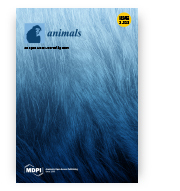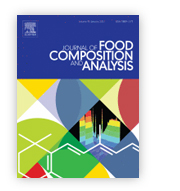Different Approach to Horses — The Use of Equid Remains in the Early Middle Ages on the Example of Ostrów Tumski in Wroclaw
Krzysztof Jaworski, Aleksandra Pankiewicz, Aleksander Chrószcz, Dominik Poradowski
Animals
 The following article concerns the functional use of horse bones in the early Middle Ages (mainly in the period from the mid of the 10th to the 12th/13th century). The authors try to explain how such remains were used and how common it was. It is also discussed whether the special role of the horse in medieval societies somehow restricted its post-mortem usage, or perhaps there was no difference between the skeletal remains of horses and other species in this regard. For this purpose, statistical calculations on the use of the bones of various mammals were made. Only the remains of the species determined during the archaeozoological analysis were taken into account. The specific use of individual parts of a horse skeleton was also noted. In addition, the analysis also encompasses all other types of horse remains that could be used by humans (hide, hair, etc.). The consumption of horse meat was discussed separately: on the basis of the preserved traces, an attempt was made to determine whether it had happened, and if so, how popular it had been. Overall, such comprehensive analysis aims to show the various roles of the horse. It was not only a mount, but also a beast of burden, a source of food and raw material as well. The main purpose of this study is to describe the role of horses in human medieval societies of Ostrów Tumski on the basis of accessible equid remains. The highlighting of the human–horse relationship in the past allows us to understand the importance and value of the horse both as a life companion and the source of food or leather and bone tools.
The following article concerns the functional use of horse bones in the early Middle Ages (mainly in the period from the mid of the 10th to the 12th/13th century). The authors try to explain how such remains were used and how common it was. It is also discussed whether the special role of the horse in medieval societies somehow restricted its post-mortem usage, or perhaps there was no difference between the skeletal remains of horses and other species in this regard. For this purpose, statistical calculations on the use of the bones of various mammals were made. Only the remains of the species determined during the archaeozoological analysis were taken into account. The specific use of individual parts of a horse skeleton was also noted. In addition, the analysis also encompasses all other types of horse remains that could be used by humans (hide, hair, etc.). The consumption of horse meat was discussed separately: on the basis of the preserved traces, an attempt was made to determine whether it had happened, and if so, how popular it had been. Overall, such comprehensive analysis aims to show the various roles of the horse. It was not only a mount, but also a beast of burden, a source of food and raw material as well. The main purpose of this study is to describe the role of horses in human medieval societies of Ostrów Tumski on the basis of accessible equid remains. The highlighting of the human–horse relationship in the past allows us to understand the importance and value of the horse both as a life companion and the source of food or leather and bone tools.
10.3390/ani10122294
The effect of strawberry ripeness on the content of polyphenols, cinnamates, L-ascorbic and carboxylic acids
Izabela Fecka, Agnieszka Nowicka, Alicja Kucharska, Anna Sokół-Łętowska
Journal of Food Composition and Analysis
 Strawberry pseudofruit is a valuable resource, rich in polyphenols, cinnamates and nutritional components, e.g. carbohydrates, carboxylic acids and vitamins. The purpose of the study was to quantify of individual polyphenols including anthocyanins, flavonols, tannins and related compounds, as well as cinnamic acid derivatives, L-ascorbic acid, and carboxylic acids in fruits of selected Fragaria × ananassa cultivars from successive growing seasons in its three ripening stages (green – unripe; pink – turning red; red – fully matured fruits), and to determine which stage selectively accumulates these bioactive compounds. The direction of changes in their concentrations during fruit development and ripening was also analyzed and discussed. There was an increase in the content of anthocyanins and cinnamates. Conversely, the content of some flavonols, tannin-related compounds, as well as citric and oxalic acids, decreased during maturation. The trends for L-ascorbic acid and malic acid varied among different cultivars. Nevertheless, some individual components and strawberry genotypes deviated from the general trends of the studied phytochemical groups.
Strawberry pseudofruit is a valuable resource, rich in polyphenols, cinnamates and nutritional components, e.g. carbohydrates, carboxylic acids and vitamins. The purpose of the study was to quantify of individual polyphenols including anthocyanins, flavonols, tannins and related compounds, as well as cinnamic acid derivatives, L-ascorbic acid, and carboxylic acids in fruits of selected Fragaria × ananassa cultivars from successive growing seasons in its three ripening stages (green – unripe; pink – turning red; red – fully matured fruits), and to determine which stage selectively accumulates these bioactive compounds. The direction of changes in their concentrations during fruit development and ripening was also analyzed and discussed. There was an increase in the content of anthocyanins and cinnamates. Conversely, the content of some flavonols, tannin-related compounds, as well as citric and oxalic acids, decreased during maturation. The trends for L-ascorbic acid and malic acid varied among different cultivars. Nevertheless, some individual components and strawberry genotypes deviated from the general trends of the studied phytochemical groups.
10.1016/j.jfca.2020.103669
Microstructure of the Surface of the Tongue and Histochemical Study of the Lingual Glands of the Lowland Tapir (Tapirus terrestris Linnaeus, 1758) (Perissodactyla: Tapiridae)
Karolina Goździewska-Harłajczuk, Pavla Hamouzova, Joanna Klećkowska-Nawrot, Karolina Barszcz, Petr Cizek
Animals
 Although the anatomy of the gastrointestinal tract has been characterized in the lowland tapir (Tapirus terrestris), the exact anatomy of its tongue has not been studied. Samples of the lingual papillae and lingual glands were collected from the tongue of an adult female lowland tapir. The microscopic analysis of the structure of the lingual papillae and the histochemical analysis of the secretion of the lingual glands were analyzed. The tongue of the tapir is divided into the apex, body with a distinct lingual prominence, and the root. Its ventral surface is smooth. The most numerous of the mechanical papillae were the filiform papillae, while numerous conical papillae with a sharp apex or more rounded papillae were present in the root of the tongue. There were also nine vallate papillae and pair of foliate papillae. The foliate papillae contained several folds parted by 12–14 grooves. The mucous secretion produced by the lingual glands was more obvious than the serous secretion. The features of the dorsal surface of the tongue as well as the shape and number of the lingual papillae on the surface of the tongue of the examined female tapir differ compared to Equidae or Rhinocerotidae, the other two representatives of Perissodactyla. However, further study is necessary for the synapomorpy of the tapir’s tongue.
Although the anatomy of the gastrointestinal tract has been characterized in the lowland tapir (Tapirus terrestris), the exact anatomy of its tongue has not been studied. Samples of the lingual papillae and lingual glands were collected from the tongue of an adult female lowland tapir. The microscopic analysis of the structure of the lingual papillae and the histochemical analysis of the secretion of the lingual glands were analyzed. The tongue of the tapir is divided into the apex, body with a distinct lingual prominence, and the root. Its ventral surface is smooth. The most numerous of the mechanical papillae were the filiform papillae, while numerous conical papillae with a sharp apex or more rounded papillae were present in the root of the tongue. There were also nine vallate papillae and pair of foliate papillae. The foliate papillae contained several folds parted by 12–14 grooves. The mucous secretion produced by the lingual glands was more obvious than the serous secretion. The features of the dorsal surface of the tongue as well as the shape and number of the lingual papillae on the surface of the tongue of the examined female tapir differ compared to Equidae or Rhinocerotidae, the other two representatives of Perissodactyla. However, further study is necessary for the synapomorpy of the tapir’s tongue.
10.3390/ani10122297









